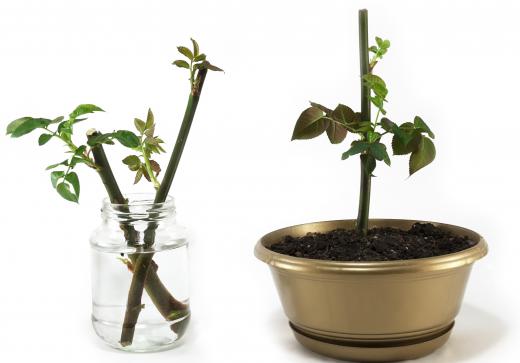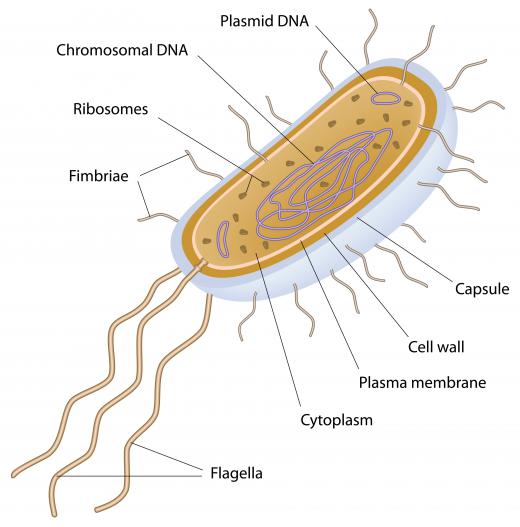What is Asexual Reproduction?
 Mary McMahon
Mary McMahon
Asexual reproduction is a form of reproduction that requires only one parent, with no exchange of genetic material and fertilization. A number of organisms use this method to perpetuate themselves. Some species are capable of both asexual and sexual reproduction, alternating methods depending on environmental factors. Most organisms that reproduce asexually are single celled, with the exception of plants, although some, like corals, may form clonal colonies that become quite large and are sometimes mistaken for a single organism.
There are a number of different ways in which an organism can reproduce asexually. One method is known to many gardeners: fragmentation. Some plants are capable of reproducing themselves with fragments that will eventually root and develop into clones of the parent plant. Fragmentation is used in the cloning and propagation of many plant species. Spore production is another method of reproduction that people may be familiar with, with some species producing spores that can mature into adult organisms.

Another method, commonly used by bacteria, is binary fission. In binary fission, a single celled organism replicates its DNA and then splits in two, creating a daughter cell that is identical to the parent. Budding is another technique that can also be seen in multicellular organisms. With budding, a daughter cell grows off the parent and eventually separates. Plants like strawberries use vegetative propagation, putting out rhizomes and other types of structures that eventually grow into new daughter plants that are identical to the parent. Yet another kind of asexual reproduction is parthenogenesis, sometimes referred to as “virgin birth,” in which an unfertilized egg can develop into a new organism.

Bacteria, fungi, protists, plants, and archaea have all been known to use asexual reproduction to reproduce. Among animals, it is relatively rare, however. There are a number of theories to explain this, with many focusing on the increased diversity available through sexual reproduction. When an organism reproduces asexually, the lack of new genetic material can make organisms vulnerable to disease and other problems, while in sexual reproduction, even if some organisms fail to survive, others will usually live on.

One advantage of this form of reproduction is that every member of a population is capable of reproducing, and that organisms can reproduce themselves very quickly. Bacteria, for example, are famous for their capability to multiply extremely quickly. It also requires less energy, and allows organisms to be more flexible in adverse environmental conditions, which can perpetuate the species as a whole.
AS FEATURED ON:
AS FEATURED ON:













Discussion Comments
can someone please tell who wrote this and when was this written?
@ GiraffeEars- I find that so disturbing, yet oddly interesting. I can only imagine if an individual reproduced by asexual reproduction. If population growth is bad now, imagine what it would be like if we did reproduce sexually. What strange science!
@ Fiorite- A good example of an animal that can reproduce asexually is an echinoderm. Animals like starfish and sea stars can reproduce copies of themselves from broken off limbs. This type of asexual reproduction is called regeneration, and results if the piece broken off is large enough. You could literally cut a starfish into five equal pieces and have the chance that all five pieces would grow into five separate animals. This happens because they have pentaradial symmetry, meaning that all five sides of the echinoderms body are symmetrical. There have even been cases of entire colonies of sea stars reproducing entirely asexually. The colony of sea stars simply shed arms and reproduces copies of themselves.
Can anyone give me an example of a few animals that use asexual reproduction? How does it work, and is it the only way that the species reproduces?
Post your comments